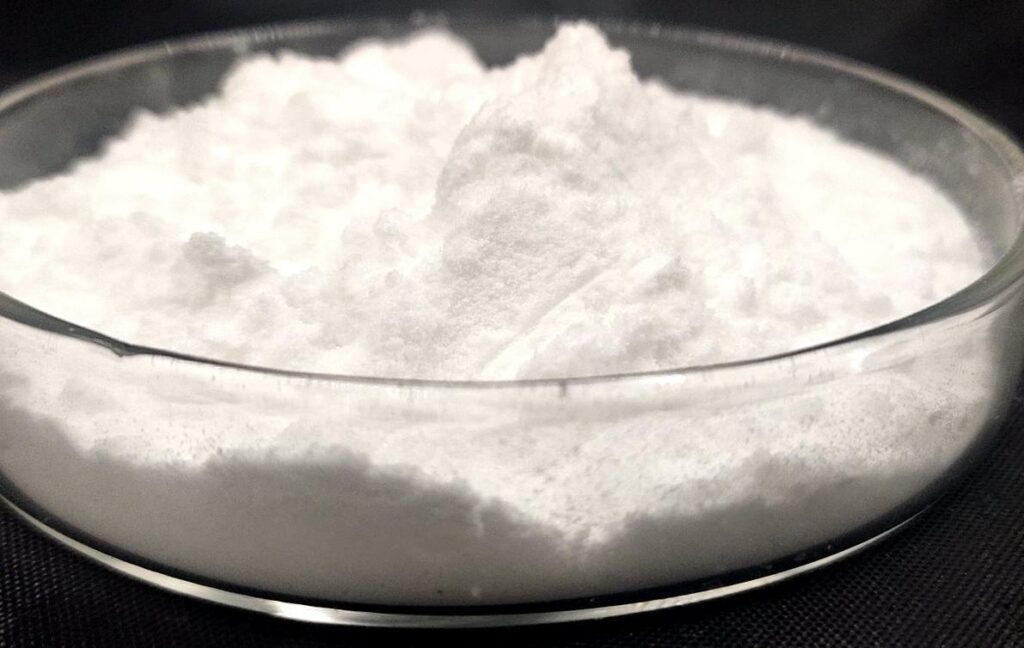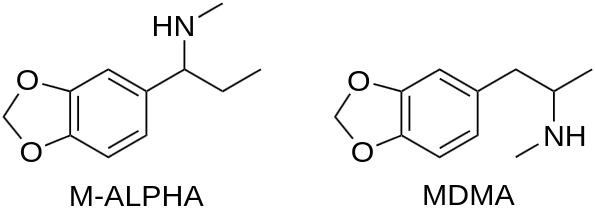- The process of creating a drug - May 23, 2023
- How do scientists model mental disorders in animals? - May 23, 2023
Introduction
PMK Glycidate serves as a critical chemical precursor in diverse industrial applications, notably in the pharmaceutical sector. This article aims to offer an all-round overview of PMK Glycidates (methyl and ethyl esters), touching upon its chemical and physical properties, synthesis methods, and various applications. Additionally, we will explore the safety guidelines and legal considerations surrounding this compound.
PMK Glycidates Chemical and Physical Properties
PMK Methyl Glycidate, also known as Methyl 3-(1,3-benzodioxol-5-yl)-2-methyl-2-oxiranecarboxylate, is a specialized derivative of Piperonyl Methyl Ketone (PMK). It generally appears as a crystalline substance, ranging in color from white to off-white, with a unique aromatic smell that differentiates it from other chemical precursors. One of its defining physical attributes is its solubility profile; while it displays limited solubility in water, it readily dissolves in a host of organic solvents, including but not limited to, ethanol, methanol, and acetone.

- Density 1.3±0.1 g/cm3
- Boiling Point 312.8±42.0 °C at 760 mmHg
- Molecular Formula C12H12O5
- Molecular Weight 236.221 g/mol
- CAS Number: 13605-48-6

PMK Ethyl Glycidate is an organic compound commonly presented as a honey like light yellow wax. The substance is distinguishable by its characteristic odor, akin to aromatic esters. When it comes to solubility, PMK Ethyl Glycidate shows excellent compatibility with organic solvents such as ethanol, acetone, and chloroform, but is sparingly soluble in water.
The boiling point, while subject to purity and atmospheric conditions, usually falls within a specific range conducive to both industrial and laboratory applications.

- Density 1.3±0.1 g/cm3
- Boiling Point 327.8±42.0 °C at 760 mmHg
- Molecular Formula C13H14O5
- Molecular Weight 250.247 g/mol
- CAS Number: 28578-16-7

On a molecular scale, PMK methyl and ethyl glycidate comprises an array of carbon, hydrogen, and oxygen atoms configured in a unique structural arrangement. These configurations contribute directly to their distinct chemical behavior, offering both stability and reactivity under varying conditions. The compounds remain generally stable under regulated environmental conditions but exhibit sensitivity to external variables such as moisture, extreme temperatures, and exposure to UV light. Their hygroscopic qualities mean that they can attract and hold water molecules from its surrounding environment, a feature that may affect their long-term stability and efficacy in chemical reactions.
PMK Ethyl Glycidate Synthesis
Preparation of methyl 3-[3′,4′-(methylenedioxy)phenyl]-2-glycidate using the method of Elks and Hey. Sodium ethoxide (23 g) was added over 4 h to a mixture of piperonal (50 g) and ethyl a-bromopropionate (61 g). The mixture was stirred and cooled in an ice bath during the addition and stirred overnight. The reaction mixture was added to ice water, acidified with dilute acetic acid, and extracted with ether. The other solution was washed with sodium carbonate solution and dried over sodium sulfate, and the ether was removed on a rotary evaporator leaving a yellowish viscous liquid.

PMK Glycidate Practical Uses
PMK ethyl glycidate serves as an intermediary substance in creating M-ALPHA derivatives and MDMA. The rampant misuse of unauthorized mind-altering drugs represents a severe social and public health issue. Korean customs officials intercepted a suspicious package sent through international mail, which contained grayish-green tablets with two active compounds detected through ultra-high-efficiency liquid chromatography. Comprehensive analysis techniques like LC-MC-TOF and NMR spectroscopy, as well as a comparison of known or newly generated spectral data, were used to define the chemical structures of these compounds. One of these substances was identified as MDMA, commonly known as “Ecstasy,” while the other was found to be an M-ALPHA derivative featuring both a hydroxyl and an N-methylcarboxamide group. This novel M-ALPHA variant was classified as 3-(benzo[d][1,3]dioxol-5-yl)-2-hydroxy-N,2-dimethyl-3-(methylamino)propanamide and labeled as M-ALPHA-HMCA, where HMCA stands for hydroxymethylcarboxamide. Though the psychoactive effects of this new compound have not yet been determined, it should be regarded as a potential new psychoactive substance or as a byproduct of MDMA production.

In another study, PMK ethyl glycidate was used as an intermediate for synthesizing desoxy phenethylamine derivatives. The molecules in this study incorporated different alkyl side-chains and ring-structured amines like azetidine, pyrrolidine, piperidine, and azepane, resulting in a set of chemically similar structures and corresponding major mass spectral fragments. These phenethylamine variants, related to the synthetic stimulant 3,4-methylenedioxy-pyrrovalerone (MDPV) and derived from natural cathinone, were produced from piperonal through precursor ketones. The resulting aminoketones and desoxy phenethylamine isomers were differentiated using capillary gas chromatography, and the aminoketones displayed longer retention times compared to their corresponding desoxyamines.
Safety Measures: Handling and Storage
Given its sensitive nature, PMK Glycidate requires specific safety measures:
- Personal Protective Equipment: Always use gloves and safety goggles when handling.
- Storage: Store in a cool, dry place away from sunlight. It should be kept in well-sealed containers to prevent contamination.
- Disposal: Must be disposed of according to regulations, often requiring specialized waste treatment.
PMK Glycidate Legal Status
The production, possession, and distribution of PMK Glycidate are subject to varying legal regulations depending on the country. It is critical to be aware of both local and international laws, especially if the chemical is intended for large-scale or commercial use. Unauthorized possession or distribution may carry severe legal penalties.
Conclusion
In summary, PMK ethyl and methyl glycidates serve as an important intermediate for creating M-ALPHA derivatives and MDMA, substances often linked with serious public health and social issues. Advanced analytical methods have been used to identify and classify these compounds, revealing new potential psychoactive substances. Additionally, the compound has applications in the development of desoxy phenethylamine derivatives, highlighting its diverse range of uses. Given these points, caution and regulatory oversight are crucial for any research or application involving PMK ethyl glycidate.
Bibliography
- Collins, Michael, et al. “Methyl 3‐[3′, 4′‐(methylenedioxy) phenyl]‐2‐methyl glycidate: An Ecstasy Precursor Seized in Sydney, Australia.” Journal of forensic sciences 52.4 (2007): 898-903. https://onlinelibrary.wiley.com/doi/abs/10.1111/j.1556-4029.2007.00480.x
- https://www.chemicalbook.com
- http://www.chemspider.com

